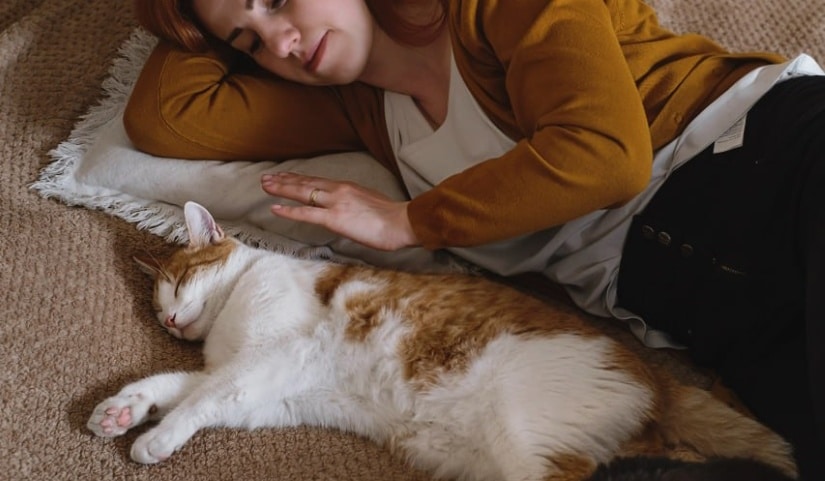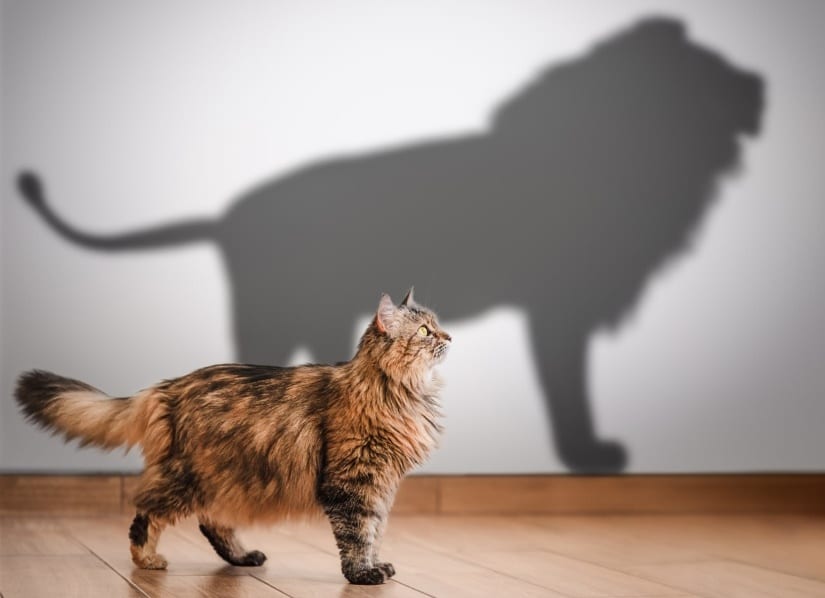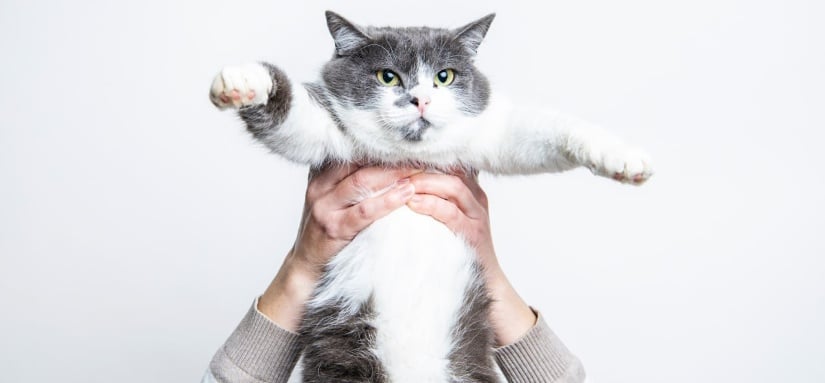What is the first thing that comes to your mind when talking about Emotional Support Animals? We are sure that most people will imagine a friendly, active dog with a wagging tail and cute little face. However, the thing is, when it comes to ESAs, any animal can be a supportive companion for a person, as their main task is to provide comfort for an individual, calm down their anxiety, and make sure they don’t feel lonely during harsh times. Yes, you’ve heard it right, any animal can be an ESA – even cats!
It’s a perfect option for those who are not dog lovers (which are typically a primary choice for service animals) or who can’t handle overactive animals due to their temper. Cats are calm, soothing, and cozy, which usually works well for individuals with mental health issues needing comfort and support. These animals can provide their owners with numerous benefits, and today we would like to discuss this topic in more detail to ensure a better understanding of emotional support cats and how they can be a great help to practically anyone!
Why Do People Need Emotional Support Animals?
Dogs can be excellent service animals or ESAs, but not everyone can handle a dog. Some individuals are afraid of them; for others, dogs may be too energetic; that’s why cats can be loving and playful companions, providing comfort and calmness by simply sitting on one’s chest and purring. We are sure you’ve already heard plenty of cat owners’ stories about how wonderful their pets are and how they help improve mental health. So why not turn your furry little friend into an official Emotional Support Animal with all the rights and benefits?
But first, let’s clear one thing out. Can you qualify as an ESA owner? People with these conditions are allowed to request an official letter from their doctor to get an ESA handler status:
- Panic attacks;
- Depression;
- Anxiety;
- Personality disorders;
- Phobias;
- ADHD;
- PTSD;
- Bipolar disorder;
- Schizophrenia;
- Etc.

Many Americans experience mental health issues and emotional challenges. According to the Centers for Disease Control and Prevention, “1 in 5 Americans will experience a mental illness in a given year.” Just try to wrap your head around this number! No wonder more and more individuals are considering getting a pet for emotional support, cats in particular. But is it worth going through the ESA registration process to get this status? The answer here is yes! Besides, it’s not as complicated as it may seem at first sight.
What Animals Can Be Emotional Support Animals?
Any animal can be an emotional support animal; it’s allowed to pick any pet of your liking. Service animals who must perform tasks for their handlers are trained and taught to help with certain activities, so only dogs and miniature cows are allowed to be service animals. However, the main task of an ESA is to provide comfort, so a person can pick any pet to be by their side during tough times. The list goes on: cats, dogs, guinea pigs, rabbits, goats, and so on. It’s only demanded to ensure a pet is well-behaved and not dangerous to people around it. Other than that – there are no limits, so think about what option will bring the most benefits into your life and talk with your doctor about getting an ESA recommendation letter. If you qualify for one, there will be no problems registering to receive an official emotional support animal handler status.
How to Register Cats as Emotional Support Animals?
First, you should remember that only people with mental health issues can register as ESA owners. Even though it’s not demanded, most handlers decide to do it to avoid uncomfortable questions while in public and have easier access to establishments that don’t allow pets in (because of special tasks of ESAs, they are sometimes allowed with their owners to help them regulate their anxiety/depression/panic attacks/etc.).
However, if you decide to register cats as emotional support animals, you should get a letter of recommendation from your therapist. Afterward, searching for a place to do it shouldn’t be too complicated; many websites can not only help with this process but also offer various accessories explicitly designed for ESAs (like vests, tags, ID cards, and many others).

What Should Be Included in My Letter?
When certifying your cat as an emotional support animal, it’s essential to make sure documentation looks as demanded and that the letter contains all the required information. So, what should be included in the letter?
- Official letterhead from a mental health professional. It’s a formal way of indicating that the letter is genuine and came directly from a provider. Sometimes people make fake documents to register and use all the benefits available with an ESA owner status, but usually, it’s quite easy to detect the frauds;
- More about the disability and ESA qualification. The statement should prove that, after the live conversation with a medical professional, it was decided that a person has a mental disability and needs an emotional support animal and benefits available under the Fair Housing Act or Americans with Disabilities Act;
- License and contact information of the therapist. This way, landlords or airlines can contact your doctor to verify that the recommendation was given by a real professional, and they can prove the need for an ESA. As we were saying, there are plenty of unfaithful people out there, so sometimes you need to verify your status by contacting a medical specialist.
If you are unsure how to go through this process on your own, some places provide special services and assistance during the registration. You don’t have to do everything alone, so contact specialists to avoid unnecessary stress and anxiety!
What Are the Main Tasks of Emotional Support Cats?

As you can see, there are plenty of benefits when it comes to having a cat as an emotional support animal. For you to have a better understanding, here is a complete list of tasks cats are good at for their owners:
- Reduce anxiety. Anxiety is an exhausting issue that may often distract people from their routine and make them forget even about essential daily tasks. When you have somebody else to take care of (in this situation, a cat), it may be easier to switch from intrusive thoughts and calm down;
- Relieve depressive symptoms and general stress. Even though this opinion is somewhat controversial, many ESA owners notice relief from the depressive feeling because of the sense of purpose and meaning. Having a responsibility and seeing how an animal thrives because of you can help with stress relief. Not to mention that petting an emotional support cat helps the body to release feel-good hormones that can improve a person’s mood and have a positive influence on their general well-being;
- Reduce loneliness. One of the main tasks of an ESA cat is to provide companionship and make sure a person is not alone during tough times. Loneliness may be very destructive, especially for those who struggle with mental health conditions, so having a little four-legged friend nearby may be a real game-changer for many individuals;
- Improve one’s sleep quality. To have a good night’s sleep and rest properly, it’s essential to feel as calm and relaxed as possible. Having an ESA can be helpful to have comfort and warmth nearby during the night, so it’s much easier to fall asleep quickly and wake up less during the night;
- Make one’s routine more energetic. Even though most cats are not the biggest fans of walking on a leash, it’s still possible to develop this habit if you practice it daily while they are still little. Moreover, many cats love being carried around, so you can pick them up and walk around the block just to spend more time outside and relieve anxiety. Playing with your pet is also a great way to distract yourself from negative thoughts and switch attention to something more pleasant.
Not to mention that having an emotional support animal may help to bond with other ESA handlers. It may be tough to meet new people, especially if you experience mental health problems, but having at least one thing in common is definitely beneficial to start a conversation and find out more about each other. And, as your four-legged friend will be there by your side, they will be less anxiety and stress caused by the unfamiliar social situation, so that’s definitely a benefit.
Do I Need Any Accessories for My ESA Cat?

When it comes to emotional support cat accessories, there is nothing that the government demands. Cat owners are not obligated to purchase anything for their pets; still, most prefer to do so to highlight the animal’s status and demonstrate it to those around them in various establishments and other public places. What are the most popular accessories for ESAs, according to recent data?
- Emotional support vests for cats;
- Leashes;
- Collars;
- Tags.
All items should be picked according to a pet’s sizing, breed, and other parameters, so it’s crucial to measure the animal before ordering anything online to make sure it’ll fit and will be comfortable to wear for a long time.
Regarding design, it all depends on the cat owner’s preferences and style. There are plenty of colors and shapes; it’s allowed to decorate the vest with embroidery and patches, use various prints, and indicate “ESA” on the products, so think about how you’d like your pet to look. Or choose a few designs and switch them between one another based on your mood. Most websites that offer ESA registration online also sell accessories for cats, so it’s possible to simply kill two birds with one stone and receive your registration certificate along with an ID card, vest, tag, and anything else of your liking!
Is There a Difference Between a Service Animal and an Emotional Support Cat?
Service animals and ESAs are different types of animal help that perform various roles in the lives of their handlers.
According to the ADA, “Service animals are defined as dogs that are individually trained to do work or perform tasks for people with disabilities.”
So, as you can see, they are working pets who are crucial in their owner’s life, while emotional support animals are mostly needed to provide companionship. You may benefit from an ESA, it’s true, but you don’t rely on them when it comes to your daily activities.
In other words, service animals are taught to perform daily tasks for their handler and are always by their side to assist with anything, and ESAs are there for comfort and stress relief. Cuddling and sitting close is not a specially taught skill; it’s rather a learned behavior, and it’s important to understand that. That’s one more reason why service animal handlers have more right and are allowed to take their pet practically anywhere; sometimes, their life depends on their dog’s skin, and we should be thankful these beautiful animals are there to help us in so many ways.
Where Can I Go with My Emotional Support Cat?
As it was already mentioned, service animals have different rights and access compared to ESAs. While the first ones are allowed practically anywhere with their owners, cats for emotional support don’t have the same legal protection. So, let’s discuss where you can take your cat if they have an ESA status.
- Rental housing. According to adata.org, “Emotional support animals that do not qualify as service animals under the ADA may nevertheless qualify as reasonable accommodations under the FHA.” That means cats are allowed everywhere with their handlers, including rental housing, hotels, hostels, and other buildings, as long as there is a valid ESA letter of recommendation. They can also live in university dorms (however, typically, they can’t be with their owners during the classes on campus);
- Flights with select airlines. Due to the recent changes of The U.S. Department of Transportation, it “…now allows airlines to recognize emotional support animals as pets, rather than as assistance animals”. That’s why, if you need to travel with a cat, there is a high chance they will travel with you as regular pets. Still, it’s worth calling the airline of your choice to discuss this topic in more detail to make sure whether there’s a chance to take your cat on board with you;
- Some public places. Even though there is no obligation to allow an ESA in public areas like restaurants or stores, some of them still allow animals to follow their owners if a valid recommendation from a therapist is present. The same situation is with emotional support cat presence in the working place – if it’s discussed with an employer and they allow having a cat next to you – great.
To Conclude. Why Are Cats Good Emotional Support Animals?

Cats are excellent emotional support animals due to numerous reasons. They are gentle and comforting and can easily help their owner relax by simply laying on their chest and purring. Any cat can be an ESA, and there is no need for special training – the main job of such animals is simply to be around and distract the handler from their mental health, calm down anxiety, and give more purpose to their lives.
If you are wondering whether you can qualify for an emotional support cat, it’s better to visit a doctor’s office and discuss your conditions with a professional. Only after that will it be possible to decide whether there is a need for a permanent ESA presence. And in case you don’t know how to register your cat, don’t worry – there are plenty of websites on the Internet that may not only help you with this process but also offer a great selection of ESA accessories. That’s it for today’s article; thank you for reading, and stay safe!
